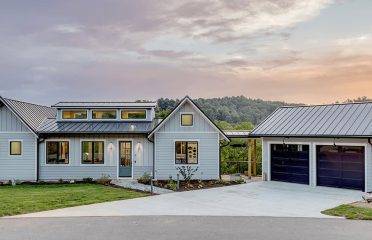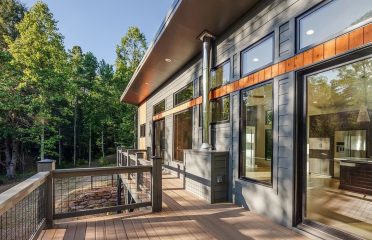Sustainable Landscaping in Green Built Projects
Thanks to the green building movement, more homes than ever are built with sustainable materials and resources. These homes also improve occupant health because they’re built in a way that improves indoor air quality. In many cases, they’re substantially more energy efficient than a conventionally built home.
Generally speaking, nearly everyone involved in the green building process spends a great deal of focus on the home. The hardscape and landscaping are also important aspects of the green built environment. If obtaining LEED or some other green built certification is a goal, the hardscape and landscape can help the construction project score points and earn the designation. Let’s look at what low-maintenance, sustainable landscaping is all about.
Low Maintenance Landscaping
The goal of landscaping for the green-built environment is to preserve natural resources, lessen the impact on the environment, and ensure it is suitable for the homesite and climate. In broad strokes, landscaping for the green built environment involves site orientation, storm water management, erosion control, and tree management and preservation.
Using native plants and climate-appropriate, drought-tolerant plants is also an important aspect of the planning process to keep landscaping low maintenance. Native grasses and vegetation help to preserve the ecosystem while minimizing the resources needed for upkeep.
Another important consideration is how to manage storm water runoff, which can become anything from a mild nuisance to a major problem if not appropriately mitigated. Since we live in a temperate rain forest, it is vital that the landscaping design accounts for the quantity and speed of storm water runoff.
Managing Rainwater and Runoff
We know from our home maintenance series, managing water around the home is important. Using native plants instead of invasive species is ideal. Fortunately for this area, native plants include the gorgeously flowering Catawba and Rodomax rhododendrons, mountain laurels, a variety of azaleas and many species of ferns. These anchor plants can survive on rainwater alone once they’re rooted and established.
Using a rainwater collection system that collects runoff in rain barrels or cisterns or a greywater system are great ways to water plants. These systems reduce the home’s reliance on cultivated resources like municipal or well water.
Permeable Surfaces and Bioswales
It’s rare to find a completely flat lot in Western North Carolina. In most cases, homesites have some sort of slope ranging from gentle to steep. Not every yard will be suitable for a large, neatly manicured lawn.
Stacked native rocks gathered while clearing and grading the land for the foundation can be used to create terraced rock walls to add a design feature that also helps with drainage. Native grasses and flowers require less water and less maintenance.
Another way to mitigate storm water runoff is to use permeable surfaces for elements like a parking pad in the image above and patios. However, many people prefer the convenience and aesthetic of concrete driveways, parking pads, and patios. Since concrete is impermeable, water must go somewhere. A good solution is to plan for bioswales to absorb and move the water.
A bioswale is essentially a vegetated channel or trench that absorbs and moves runoff. Often times they’ll feature long fescue and other deep-rooting plants that help retain water for the benefit of all of the vegetation around it. Sometimes you’ll see rock swales used to move a lot of water quickly. They’re often used to improve drainage and curb erosion.
Leverage Shade
The surrounding tree canopy can help reduce your energy consumption in the summer months, so it’s important to plan for shade in your landscaping design. If leveraging passive solar design, it’s a good idea to plan deciduous trees on the south-facing side of the home instead of evergreens. The leaves from trees like oak, maple, and poplar provide ample shade in the summer that blocks the sun’s energy. Yet, in the winter after the trees drop their leaves, the sun’s energy is easily captured.
Invariably trees are cut down and cleared for the building envelope. When replacing trees, oak and poplar make good choices in this area because once they’re established, they can survive just fine on rainwater. Their leaves can be mulched and used to return nutrients to the soil, too.
Smart Landscaping Design
We love that more and more people are building smart, energy efficient, healthy homes that will endure for generations, and it is important to adopt sustainable, energy and water efficient practices in the yard, lawn, and garden.
Planting shade trees helps to lower energy costs; lawn and yard maintenance methods (like a rake instead of a gas-powered leaf blower) can reduce fuel consumption, exhaust, and emissions, which help lower the home’s carbon footprint. 15 percent harvested rainwater or used recycled water to water plants; and 11 percent used drip irrigation.
Using green practices in the yard may take a little extra effort and time on the front end, yet those same practices may help you save time and money in the future.
More about green building
We have a library of articles dedicated to building green homes for you to peruse. The whole green building library is available on our blog, and these articles might be a good place to start:
- Learn ways to reduce your carbon footprint on our blog.
- Read more about our experience as Asheville green builders on our About page.
- Find your green comfort zone here.
When you’re ready to build a custom home or commercial project that will reduce your energy costs, we’d love to talk. Click the button below to contact us.







